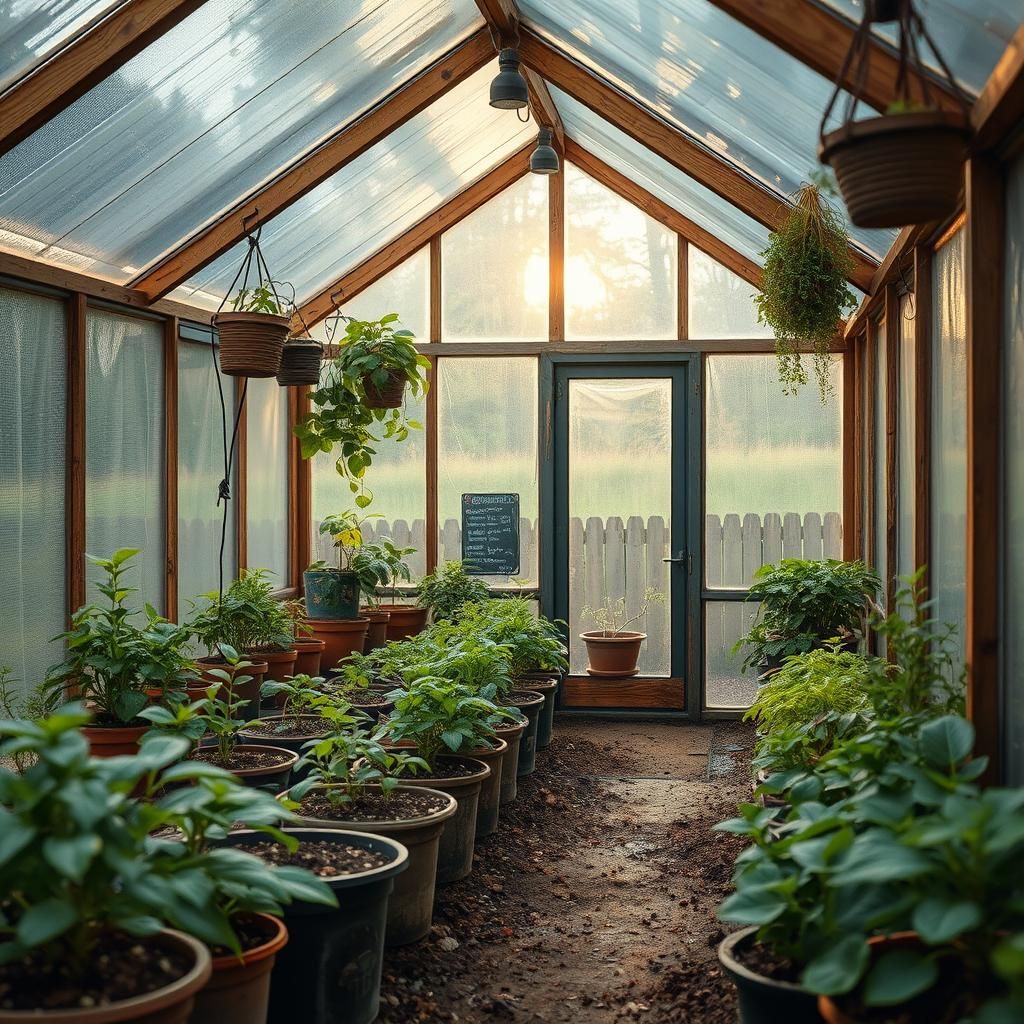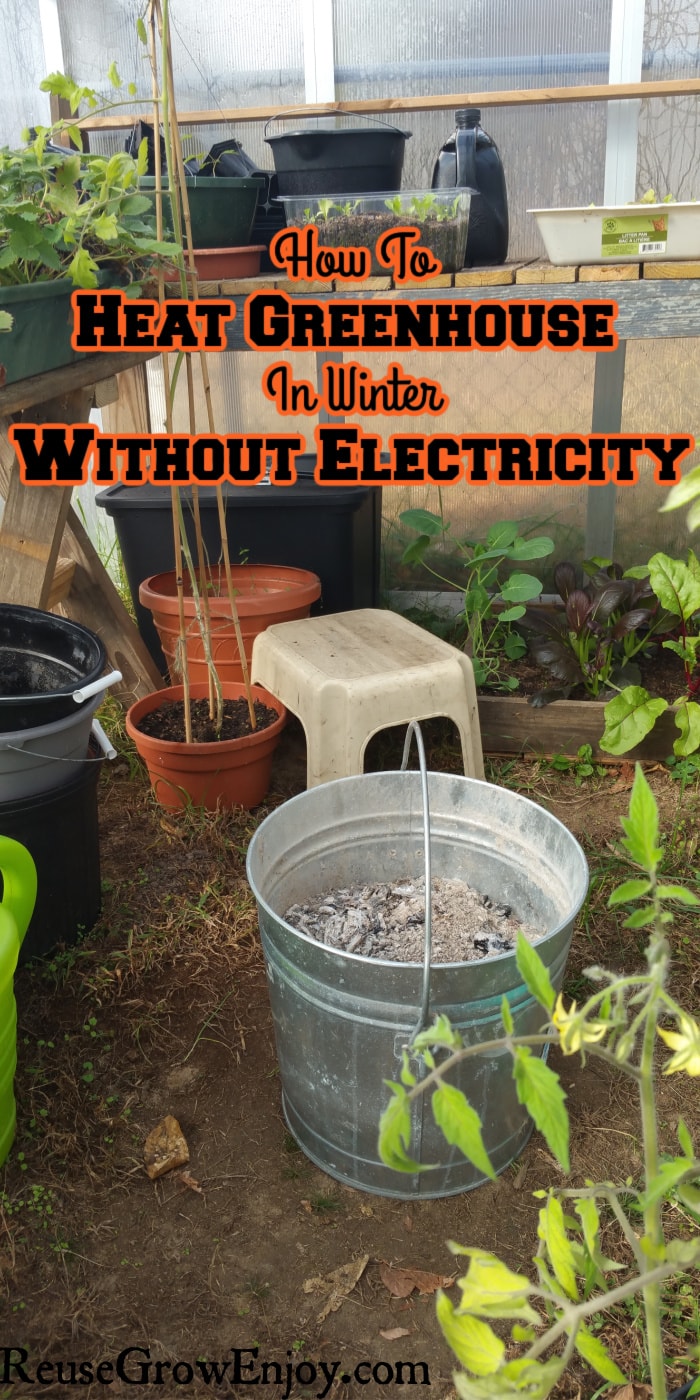What is the most economical way to heat a small greenhouse? 10 Effective Strategies for Budget-Friendly Heating

Heating a small greenhouse efficiently is essential for maintaining optimal conditions for plant growth while keeping costs in check. As energy prices continue to rise, many gardeners are seeking economical solutions to provide warmth without breaking the bank. This article explores ten effective strategies for budget-friendly heating in your greenhouse. From passive solar techniques to innovative insulation methods, these techniques can help you create a comfortable environment for your plants year-round. Whether you're a seasoned gardener or just starting, these tips will enable you to maximize your greenhouse's potential without overspending. Discover how to keep your plants thriving sustainably and affordably.
The Most Economical Ways to Heat a Small Greenhouse
To effectively heat a small greenhouse without overspending, one of the most economical methods is by utilizing a combination of passive solar heating and affordable insulation techniques. Consider positioning your greenhouse to maximize sunlight exposure during daylight hours, allowing the sun’s energy to naturally warm the space. Incorporating thermal mass materials, such as water barrels or stone, can help retain heat overnight, while using shade cloth during the hottest days minimizes excessive heat. Supplementing these methods with portable electric heaters or propane heaters during the coldest periods can provide additional warmth without a significant financial burden, especially when timers are used to reduce energy consumption.
Passive Solar Heating
Passive solar heating involves designing your greenhouse to take advantage of the sun's energy by using large windows and clear panels that allow sunlight to enter while being insulated adequately. By orienting your greenhouse towards the south or southwest and using thermal mass to store heat, you can ensure a warmer environment during chilly nights without needing to rely heavily on artificial heating sources.
Insulation Techniques
Proper insulation is crucial for maintaining heat within your greenhouse. Using materials such as bubble wrap or double-layer plastic films can trap warm air while allowing light to penetrate, contributing to a more stable temperature. Insulating the base and ensuring there are no gaps or leaks around windows and doors further prevents heat loss, making your heating efforts more efficient and economical.
Thermal Mass Materials
Utilizing thermal mass materials such as concrete, bricks, or even large water tanks can significantly enhance the greenhouse's heat retention capabilities. By absorbing heat during the day when temperatures are higher, these materials release it slowly at night, creating a more stable climate for your plants without the need for continuous external heating.
Portable Heating Options
Investing in portable electric or propane heaters provides flexibility to your heating strategy. These heaters can be moved to different areas of the greenhouse as needed and can be set on timers to operate during the coldest periods of the night. This targeted heating method helps reduce energy costs while keeping your plants warm and healthy.
Utilizing Heat Sinks
Incorporating heat sinks—like large water containers or rocks—into your greenhouse structure can absorb excess heat during sunny days and release it slowly during cooler nights. Positioning these around the greenhouse allows them to optimize temperature fluctuations, minimizing the need for additional heating sources, thereby saving energy and costs.
| Method | Cost | Efficiency |
|---|---|---|
| Passive Solar Heating | Low | High |
| Insulation | Medium | High |
| Thermal Mass | Medium | Moderate |
| Portable Heating | Variable | High when used efficiently |
| Heat Sinks | Low | Moderate |
How can I heat my greenhouse cheaply?

To heat your greenhouse cheaply, there are several methods and techniques you can employ to maintain a suitable temperature for your plants without spending a fortune. Here are some effective strategies for affordable greenhouse heating:
Utilize Solar Energy
One of the most cost-effective ways to heat your greenhouse is by harnessing the power of the sun. Solar energy can be used through various methods:
See also:
- Solar panels: Install solar panels to generate electricity which can power heating devices or systems.
- Passive solar design: Use materials like thermal mass (e.g., water barrels or concrete) that absorb heat during the day and release it at night.
- Greenhouse orientation: Position your greenhouse to maximize sunlight exposure, ideally facing south in the northern hemisphere.
Insulation Techniques
Proper insulation is crucial to maintaining warmth in your greenhouse. Here are some effective insulation strategies:
- Use double-layer polycarbonate panels: These panels provide better insulation than single-layer ones, trapping heat more efficiently.
- Seal drafty areas: Inspect and seal any gaps or cracks where warm air can escape.
- Add thermal curtains: Use curtains made from insulating materials at night to reduce heat loss.
Composting Heat
Composting can generate significant heat that can be utilized to warm your greenhouse. Here's how:
- Create a compost pile: Place organic materials like kitchen scraps and yard waste in a designated area.
- Circulate air: Use fans to distribute the warm air generated by the compost.
- Insulate the compost: Keep the compost pile insulated to maintain high temperatures longer.
Efficient Heating Systems
If you prefer a more controlled heating system, consider these efficient options:
- Electric heaters: Use low-wattage electric heaters with thermostats for specific zones within the greenhouse.
- Gas heaters: Invest in an energy-efficient gas heater that can provide heat without excessive costs.
- Wood stoves: Traditional wood-burning stoves can be a cost-effective heat source if you have access to affordable fuel.
Using Heat-Absorbing Materials
Incorporating materials that retain heat can significantly enhance the thermal efficiency of your greenhouse:
- Water barrels: Fill barrels with water and place them in sunlight; they will act as thermal mass, releasing heat slowly.
- Brick or stone walls: Build the walls of your greenhouse with materials that can absorb and hold heat.
- Concrete floors: Utilize a concrete floor to store heat during the day and release it at night.
How can I heat my small greenhouse for free?

To heat a small greenhouse for free, there are several effective methods you can implement. These strategies harness natural energy sources, minimize costs, and maintain a warm environment for your plants.
Utilizing Solar Energy
Harnessing the power of the sun is one of the most efficient ways to heat your greenhouse. Solar energy can be captured through various means:
- Solar panels: Install solar panels on the roof of your greenhouse to generate electricity that can be used for heating.
- Passive solar design: Use materials like clear polycarbonate or glass that allow sunlight to enter and warm the interior during the day.
- Thermal mass: Incorporate materials such as water barrels or stones that can absorb heat during the day and release it during cooler nights.
Companion Planting
Another way to maintain warmth in your greenhouse is through the concept of companion planting, which is beneficial in several ways:
- Heat retention: Some plants naturally release heat through their metabolic processes, helping to keep the surrounding area warm.
- Reducing temperature fluctuations: Companion plants can create microclimates, reducing the extremes of temperature within the greenhouse.
- Enhanced growth: Healthy plants promote better airflow and humidity levels, which can also aid in keeping the greenhouse warm.
Using Compost for Heating
Composting can generate heat, making it an excellent method to warm up your greenhouse:
- Active compost pile: Create a compost pile within or nearby your greenhouse; the decomposition process generates heat.
- Insulation: Place compost bins along walls to act as insulation while releasing heat into the greenhouse.
- Consistent temperature: Monitor the compost to ensure it is actively generating heat; use this supplemental warmth during colder nights.
Windbreaks and Insulation
Implementing windbreaks and proper insulation is crucial for maintaining temperatures:
See also:
- Windbreaks: Plant shrubs or install barriers around the greenhouse to protect against cold winds.
- Insulation materials: Use bubble wrap or thermal blankets on the inside of the greenhouse during colder months to retain heat.
- Covering vents: Close any unnecessary vents or openings to minimize heat loss during nighttime.
Water Features for Temperature Regulation
Incorporating water features can also help regulate the temperature in your greenhouse:
- Water barrels: Position large water barrels strategically to absorb sunlight during the day and release heat at night.
- Ponds or water gardens: If space allows, creating a small pond can retain heat and increase humidity beneficial for plant growth.
- Evaporative cooling: Utilize water to create evaporation cooling during hot sunny days, balancing temperature throughout the greenhouse.
What is the cheapest form of greenhouse heating?

The cheapest form of greenhouse heating generally involves using methods that are cost-effective, energy-efficient, and sustainable. Here are some ways to achieve low-cost heating for greenhouses:
Passive Solar Heating
Passive solar heating is one of the most economical ways to maintain warmth in a greenhouse. This method utilizes the sun’s energy without the need for mechanical systems. Key aspects include:
- Orientation: Positioning the greenhouse to face south maximizes sunlight exposure.
- Thermal Mass: Incorporating materials like water barrels or concrete can store heat during the day and release it at night.
- Insulation: Using double-layered glazing or thermal blankets can help retain heat within the structure.
Wood Burning Stoves
Wood burning stoves provide an efficient and generally inexpensive way to heat a greenhouse, especially in rural areas where wood is readily available. Benefits include:
- Cost-effective fuel: Utilizing scrap wood or local timber can lower heating costs significantly.
- High heat output: A wood stove can produce substantial warmth effectively, making it suitable for larger greenhouses.
- Carbon neutrality: Burning wood is more environmentally friendly as it recycles carbon dioxide in the atmosphere.
Heat Mats
Heat mats are electric devices placed under plant trays to provide gentle warmth to roots, which can help maintain the overall temperature in the greenhouse. Features include:
- Targeted heating: They provide direct heat to plants, which can be more efficient than heating the entire space.
- Energy-efficient: Heat mats use less electricity compared to larger heating systems.
- Temperature control: Many models come with thermostats to maintain desired soil temperatures, reducing energy waste.
Compost Heat
Utilizing the heat generated from decomposing organic matter is another affordable option for greenhouse heating. Important points include:
- Natural heating: As compost breaks down, it releases heat that can be channeled into the greenhouse.
- Sustainable practice: This method recycles waste materials and supports ecological gardening.
- Cost-effective: Using readily available organic materials can significantly cut heating expenses.
Solar Water Heating Systems
Solar water heating systems are a great investment for long-term savings on greenhouse heating. Consider the following:
- Renewable energy: Harnessing solar energy reduces dependency on fossil fuels for heating.
- Continuous heat supply: Water heated in solar collectors can provide warmth day and night.
- Low operating costs: Once installed, the ongoing expenses are minimal compared to traditional heating methods.
Questions from Our Readers
What are the most economical heating options for a small greenhouse?
The most economical heating options for a small greenhouse include using electric heat mats, propane heaters, or natural gas systems. These methods can provide adequate warmth while keeping energy costs low. Additionally, insulation and thermal mass, such as water barrels or rocks, can help retain heat, making these options even more efficient.
How can I reduce heating costs in my greenhouse?
To reduce heating costs in your greenhouse, consider using solar panels to harness renewable energy. Installing thermostats and timers can help regulate temperature efficiently, ensuring heaters operate only when necessary. Covering the greenhouse with double layers of plastic or heat-retaining materials can also prevent heat loss.
See also:
Is it worth investing in a greenhouse heater?
Yes, investing in a greenhouse heater can be worthwhile, particularly in colder climates where maintaining a stable temperature is crucial for plant health. A good quality heater can provide consistent warmth, promoting growth and productivity, which often outweighs the initial investment over time.
Can I use passive heating methods in my greenhouse?
Absolutely! Passive heating methods such as positioning your greenhouse to maximize sun exposure, using thermal mass to absorb heat during the day, and incorporating ventilation to manage heat can be very effective. These techniques are often low-cost, environmentally friendly, and can significantly reduce your reliance on mechanical heating systems.

If you want to read more articles like What is the most economical way to heat a small greenhouse? 10 Effective Strategies for Budget-Friendly Heating, we recommend you check out our Greenhouse category.
Leave a Reply
Related Articles